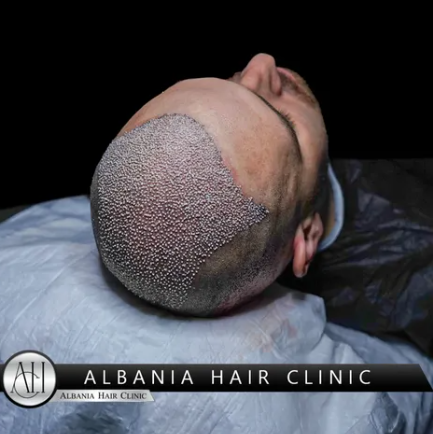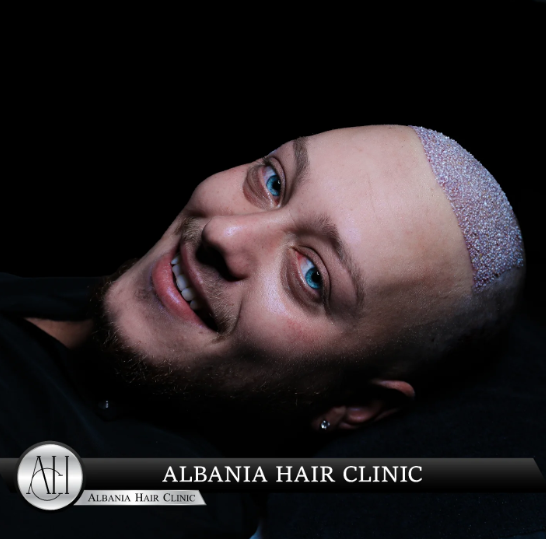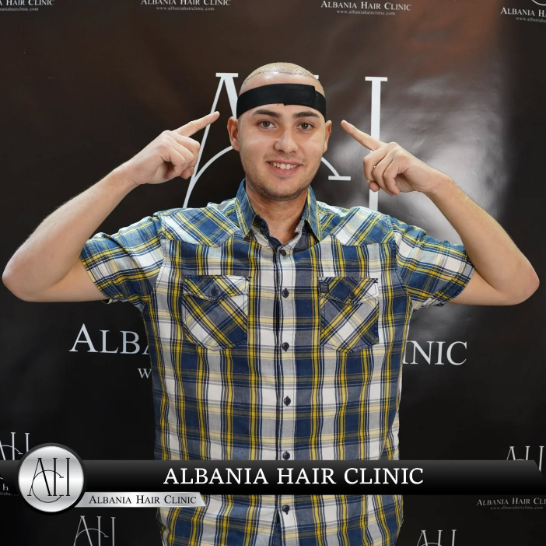Hair transplants have become a popular solution for those struggling with hair loss, offering a permanent way to regain confidence and restore a full head of hair. However, the success of the procedure doesn’t just depend on the surgery itself—it also hinges on how well you follow the aftercare instructions. Proper aftercare instructions ensures optimal healing, promotes hair growth, and reduces the risk of complications after a hair transplant.
In this blog, we’ll guide you through everything you need to know about caring for your scalp post-transplant, from cleaning techniques to lifestyle adjustments and long-term maintenance tips.
Table of Contents
ToggleWhy Hair Transplant Aftercare is Crucial
Hair transplants involve extracting healthy hair follicles from donor areas and implanting them into areas experiencing thinning or balding. These delicate follicles require a nurturing environment to take root and grow effectively.
Key reasons aftercare matters include:
- Reducing infection risk: Proper care minimizes the chance of bacteria entering the scalp.
- Protecting grafts: Newly transplanted grafts are vulnerable during the initial healing phase.
- Promoting growth: Following aftercare instructions boosts the success rate of follicle survival and encourages healthy growth.
Neglecting aftercare could result in graft failure, scarring, or less-than-optimal results.
Immediate Post-Surgery Instructions
1. Protect Your Scalp
After surgery, your scalp will be sensitive and may appear red or swollen. Avoid touching or scratching the grafted area as this can dislodge the newly implanted follicles.
- Use the provided headband: Many clinics provide headbands to reduce swelling and prevent accidental contact.
- Sleep with your head elevated: Use pillows to prop up your head at a 45-degree angle for the first few nights to reduce swelling and improve blood circulation.
2. Medications and Pain Management
Your surgeon may prescribe:
- Antibiotics: To prevent infections.
- Painkillers: To alleviate discomfort.
- Anti-inflammatory medications: To reduce swelling.
Follow the dosage instructions carefully and complete the prescribed course, even if symptoms subside.
3. Avoid Strenuous Activities
Refrain from physical activities such as running, weightlifting, or bending over for at least 7–10 days. These actions can increase blood flow to the scalp, potentially dislodging grafts or causing bleeding.
How to Wash Your Hair After a Transplant
One of the most critical aspects of aftercare is learning how to clean your scalp properly.
Day 1–3: No Washing
Avoid washing your hair during the first 48–72 hours post-surgery. The grafts need time to settle without interference.
Day 4–10: Gentle Washing
- Use a mild shampoo: Opt for a surgeon-recommended shampoo, typically free from harsh chemicals.
- Dilute the shampoo: Mix it with lukewarm water before application.
- Avoid direct water pressure: Use a cup to pour water gently over your head instead of using a showerhead.
- Pat dry carefully: Use a soft towel to pat the scalp dry—do not rub.
After Day 10
By now, most scabs should have fallen off naturally. You can gradually return to your normal washing routine but still avoid aggressive scrubbing.
What to Avoid After a Hair Transplant
1. Sun Exposure
Protect your scalp from direct sunlight for at least 2–3 weeks post-surgery. Wear a loose-fitting hat when outdoors or follow your surgeon’s advice on UV protection.
2. Smoking and Alcohol
Both smoking and alcohol can hinder the healing process by reducing blood flow and impairing nutrient delivery to the grafts. Avoid these for at least two weeks after surgery.
3. Hair Products
Skip styling gels, sprays, or other products until your surgeon gives the green light. These can irritate the scalp and interfere with healing.
4. Scratching or Picking Scabs
Scabs may form around the grafts. Let them fall off naturally to avoid damaging the follicles.
Nutritional Tips for Faster Recovery
Focus on a Healthy Diet
Your body needs nutrients to heal effectively. Incorporate foods rich in:
- Proteins: Eggs, chicken, and fish to support tissue repair.
- Vitamins A and C: Found in carrots, citrus fruits, and spinach to boost collagen production.
- Zinc and Iron: Found in lean meats and nuts to promote healthy hair growth.
Stay Hydrated
Drink plenty of water to keep your scalp hydrated and promote healing.
When to Expect Hair Growth
It’s essential to have realistic expectations about the timeline of hair growth after a transplant.
1. First Month:
- Scabs and redness subside.
- Shedding of transplanted hairs (shock loss) is common—don’t panic!
2. 3–4 Months:
- New hairs begin to emerge. These may initially appear thin but will thicken over time.
3. 6–9 Months:
- Significant hair growth becomes evident.
4. 12 Months and Beyond:
- Final results become visible, with fuller and denser hair.
Patience is key during this process, as results vary depending on individual healing rates.
Long-Term Care for Transplanted Hair
Even after the initial recovery period, maintaining healthy habits ensures the longevity of your transplanted hair.
1. Regular Scalp Care
- Use sulfate-free shampoos and conditioners to maintain scalp health.
- Consider occasional scalp massages to stimulate blood flow.
2. Protect Against Hair Loss
- Follow a hair care routine that minimizes damage (e.g., avoid excessive heat or harsh chemicals).
- Discuss with your doctor about hair-strengthening treatments like PRP therapy or medications like minoxidil.
3. Annual Check-ups
Visit your surgeon annually to assess the condition of your hair and scalp.
Recognizing Potential Complications
While hair transplants are generally safe, it’s essential to watch for signs of complications:
- Excessive redness or swelling: Could indicate an infection.
- Severe itching or pain: May require medical attention.
- Persistent bleeding: Contact your doctor immediately.
FAQs on Hair Transplant Aftercare
1. When can I resume physical activities?
Light activities can resume after 7–10 days, but avoid heavy lifting for at least 2 weeks.
2. Can I wear a hat after a hair transplant?
Yes, but only loose-fitting hats to avoid pressure on the grafts. Consult your surgeon about when it’s safe to start.
3. Is it normal to lose transplanted hair?
Yes, shedding is a normal part of the healing process. New hair growth typically starts within 3–4 months.
Proper aftercare is the cornerstone of a successful hair transplant. By following your surgeon’s instructions and adopting a gentle approach to scalp care, you can maximize your results and enjoy a fuller, healthier head of hair. Remember, healing takes time, but the reward is well worth the patience.
If you’re considering a hair transplant or have recently undergone one, consult your clinic for personalized advice and support. Your journey to restored confidence starts with proper aftercare!






